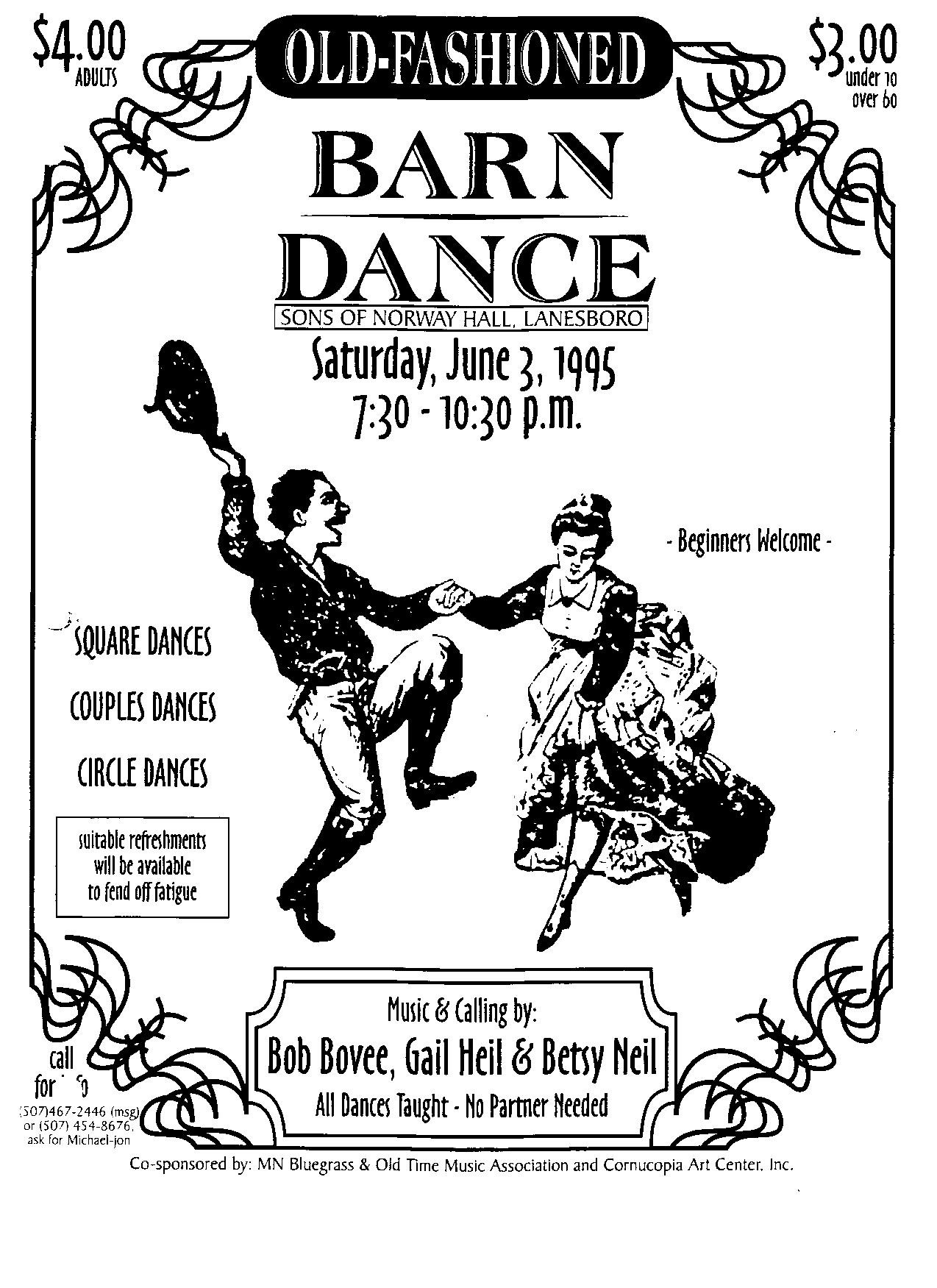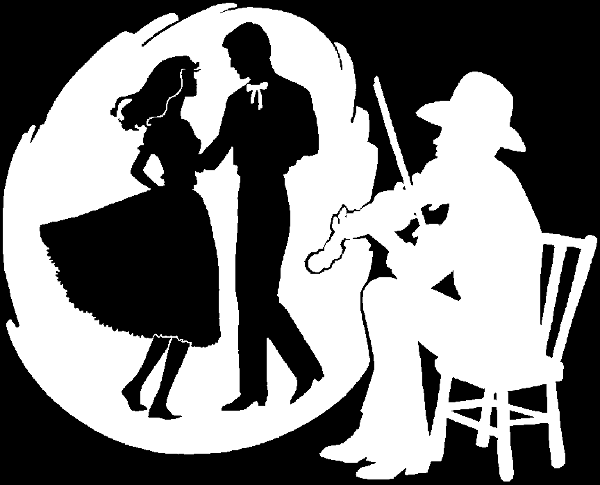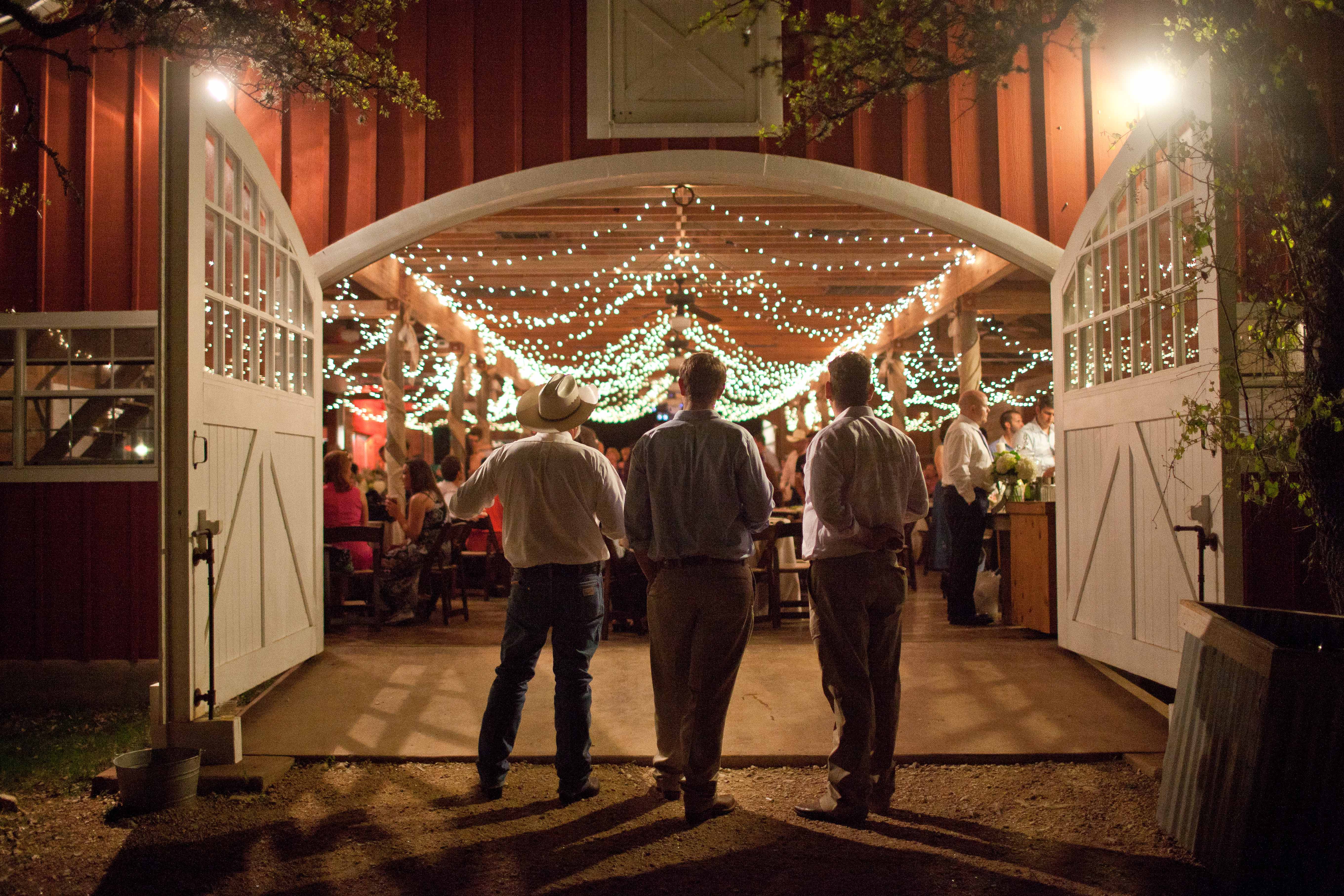Barn dance
As Barn Dance Show, a radio program type is called, which was popular in the U.S. in the 1930s and 1940s. In the shows exclusively country music and related styles was played.
History
Root
The later Country shows have their roots in the traditional square dances, which were maintained by the populations of the mountain regions. Usually, they met at the weekend in a barn to dance to the sounds of a string band, which was a welcome change from the busy week. A first representation of this Barn Dances there was on January 4, 1923 on radio station WBAP in Fort Worth, Texas, but still had significant differences from the later shows. 1922 and 1923 occurred on the station WSB also the first hillbilly musicians, but did not play in the studio in front of an audience. A payment there was not also; the musicians played only for their own entertainment and that of the audience.
Rise
Adaptation on the radio
1924 brought the senior staff of the Chicago radio station WLS George D. Hay National Barn Dance on the way. Hay had seen, despite skepticism of the program directors personally for the development of this show. Here, elements of traditional Barn Dances like a square dance followed were used. The program exclusively occurred hillbilly musicians, the studio audience - later, or in the auditorium - and chatted behind the receivers traditional rural string band music, old folk ballads or cowboy songs. In between the program was interspersed with performances by comedians. The National Barn Dance has quickly become one of the most popular programs of the U.S. and many other channels followed the trend.
1930-1955
Hay went in 1925 to Nashville, Tennessee, where he created another Barn Dance show on WSM, which was renamed in 1928 in Grand Ole Opry. The Opry has been the most successful and longest-lived show of the U.S. in the following years. You will also be sent today from the Opryland complex. Beginning of the 1930s, and in the following years many more such Barn Dance shows started, including the KMA Country School (1928 ), the WWVA Jamboree (1933 ), the WLW Renfro Valley Barn Dance (1939 ), the WSB Barn Dance (1940 ), the WRVA Old Dominion Barn Dance (1946 ), the KRLD Big D Jamboree and Louisiana Hayride of KWKH (1948 ), the WHAS Old Kentucky Barn Dance (1949 ) and the Town Hall Party ( 1951). At the height of the popularity of these shows, the late 1940s and early 1950s - the same time the "golden age of country music " - there were about 600 Country shows.
The cables of the radio stations often published so-called " song folios ," books in which the radio station to present their artists announced extraordinary shows and represented the history of each show. The shows were instrumental in the spread of country music, which was until 1923 completely ignored by the entertainment industry and was considered a " hintlerwäldlerisch " ( hillbilly ). Especially since 1933, was broadcast nationwide as the National Barn Dance on the CBS network, the popularity of country music grew tremendously.
The mailings often brought out big stars of the genre, such as the Delmore Brothers, Fiddlin ' Arthur Smith, Uncle Dave Macon or Grandpa Jones, who only by his appearances on the Opry got its popularity in the 1930s. Hank Williams also built his career with performances in the then newly launched Louisiana Hayride and made his first appearance at the Opry in 1949 his breakthrough.
End
Due to the increasing popularity of television beginning of the 1950s, and by the triumph of rock ' n ' roll from 1954 in which the country music lost almost all young listeners, took off the popularity of Barn Dance shows. The audience could now seek entertainment at home on TV and had to now no longer go to the next Saturday night show, which also still cost entry. Although some shows like the Town Hall Party, the KSTP Sunset Valley Barn Dance WLW Midwestern Hayride, or could also transmit their shows on TV, now you could not prevent the decline. Some shows, such as the Big D Jamboree and Louisiana Hayride of to musical facts to fit and also let rockabilly musicians take part in their programs. The best known example of this is probably the young Elvis Presley, whose performances regularly caused mass hysteria among the female audience in the Hayride.
The Town Hall Party rose from 1955 inevitably rock'n'roll and rockabilly around, even though announcer Jay Stewart, the show always "California 's Western Music Hall of Fame" called. Firmly integrated ensemble members of the Town Hall Party, which played Rockabilly were, among others, The Collins Kids, Bobby Helms, Bob Luman, Wanda Jackson and Sammy Masters.
Barn Dances today
Few shows have survived to the present day, mainly lies in the development of the entertainment and television industry. Today in the U.S., only five known Barn Dance shows on the air, the Grand Ole Opry, the WWVA Jamboree, the Louisiana Hayride, the Sagebrush Roundup and the Renfro Valley Barn Dance, which is not transmitted by the radio. Alternatively, so called in memory of some programs "Reunion Concerts" organized with the old artists. This is the case, among others, the WNER Suwanee River Jamboree.
In Canada, there is still the CKNX Barn Dance from Ontario, which is held regularly again since 1987.
Characteristics
The characteristic of the country shows was above all that they romanticized reflected the entertainment of the mountain region 's population. The stage was often designed in the style of an old barn, the prairie or other romantic prospects. The names of the shows often were based on terms such as Jamboree (Eng. " great feast " ), Hayride (Eng. " Heuritt " ) or Barn Dance (Eng. " barn dance "). Added was the only place of transmission (eg, Renfro Valley Barn Dance, Carolina Hayride ) or other typical expressions. In addition to Barn Dances from barns, there have been stage shows, which, like the Grand Old Opry, did not come from a converted barn, but were sent out right auditoriums. The subsequent Square Dance therefore also fell away.









